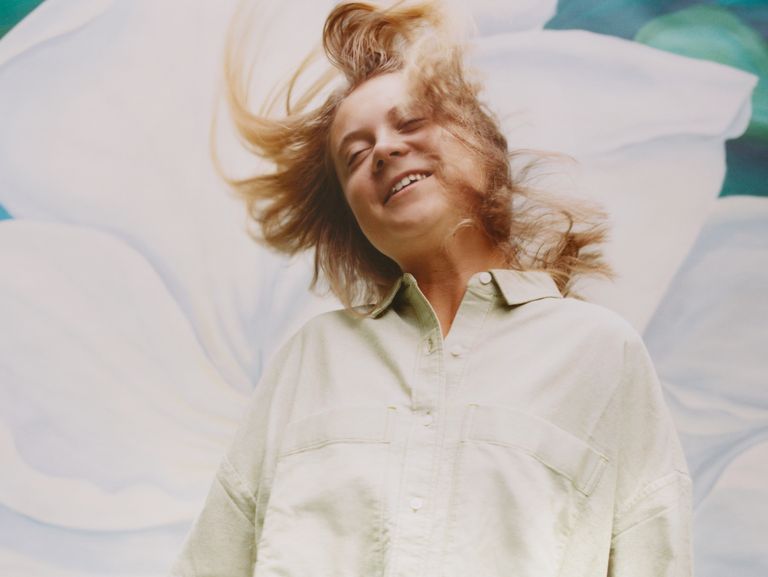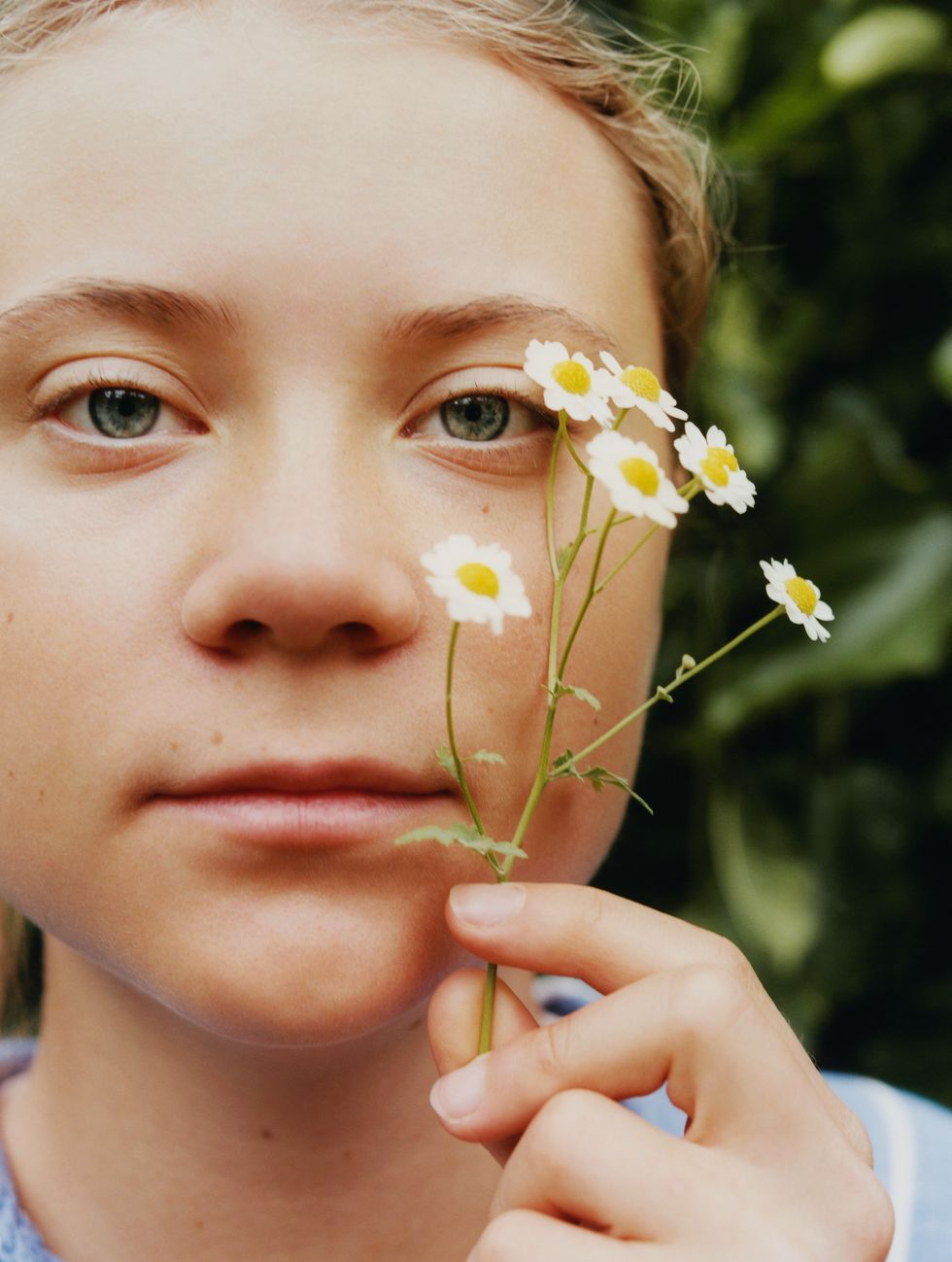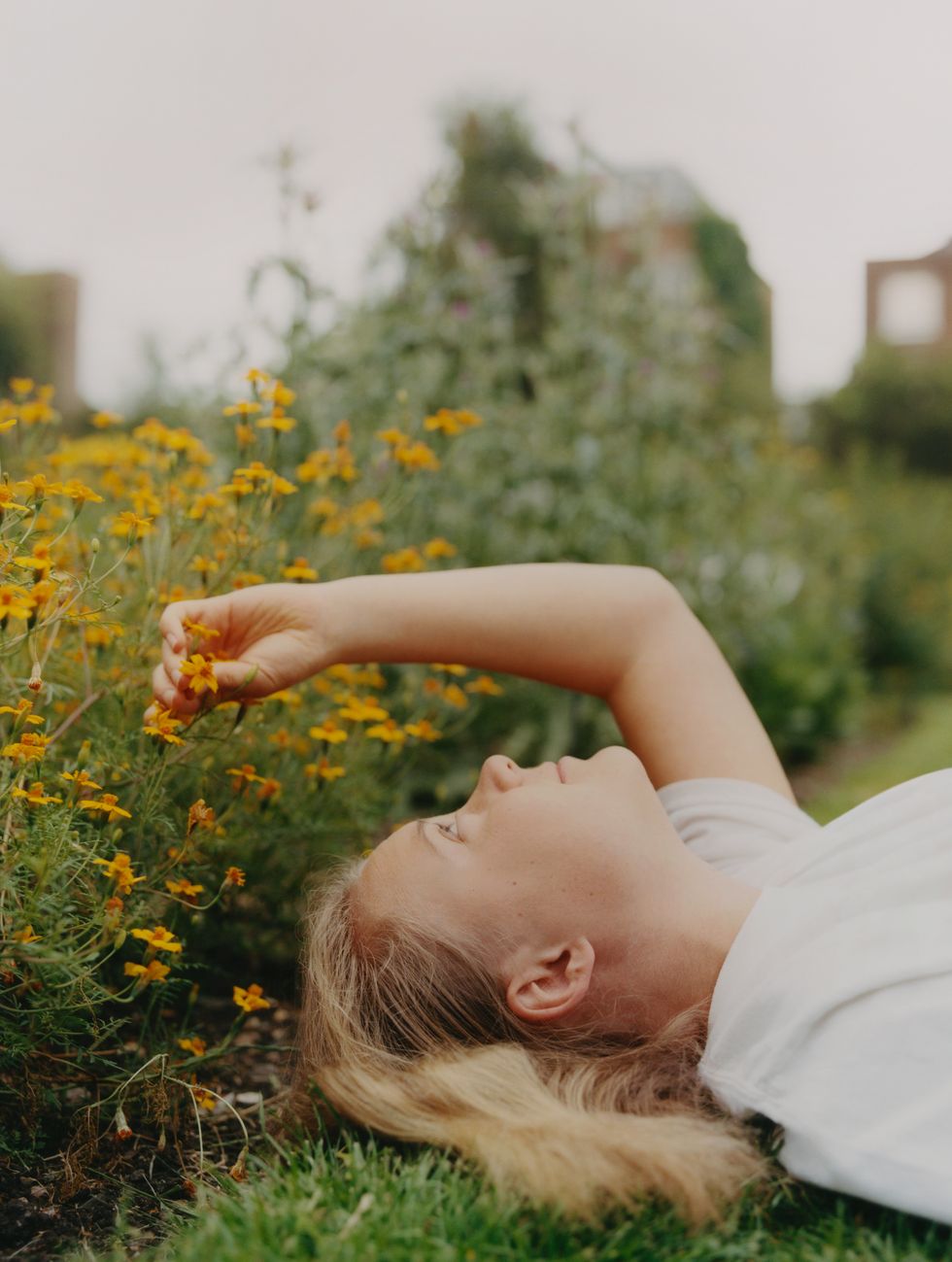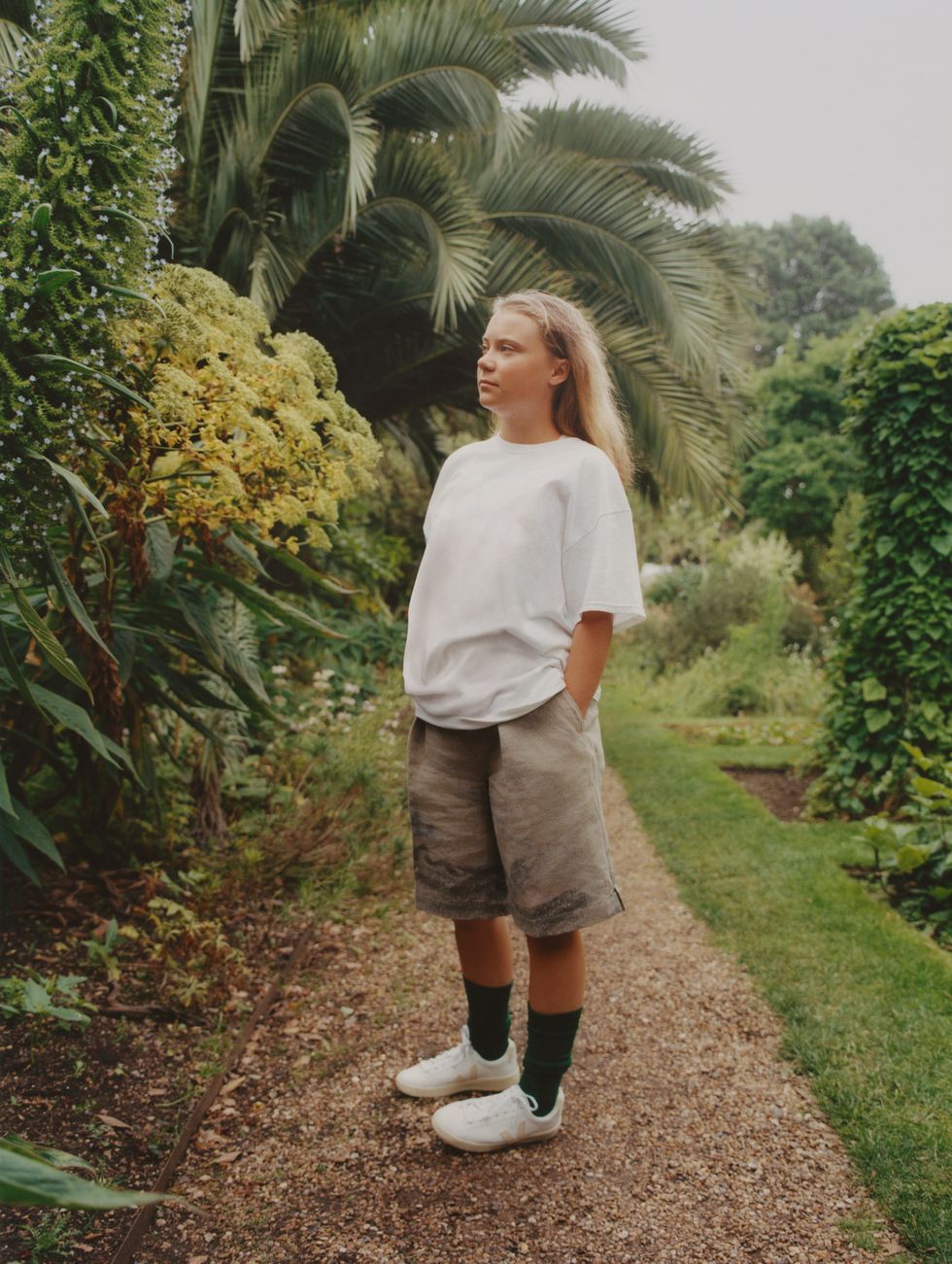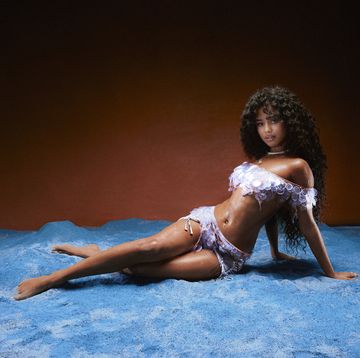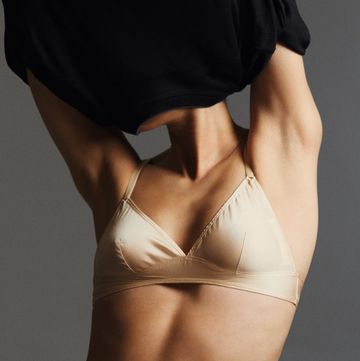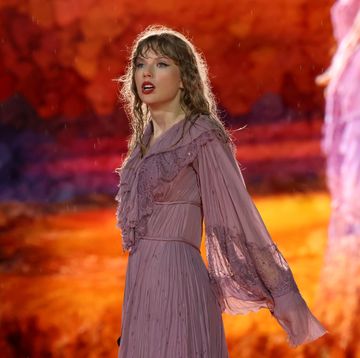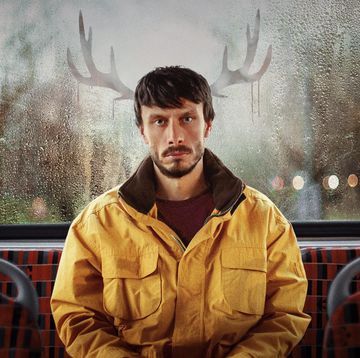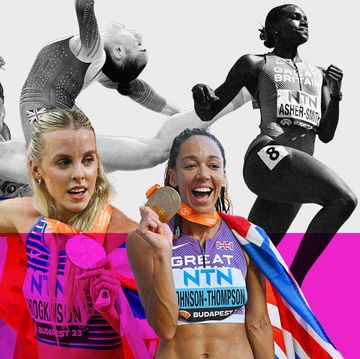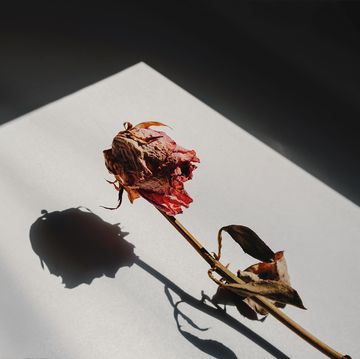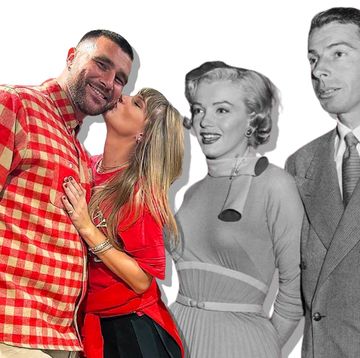Greta Thunberg is dancing. In fact, she’s performing the choreography for Beyoncé’s Single Ladies (Put a Ring on It) to the theme song for Thomas the Tank Engine. As you might know from the meme she’s referencing, the pairing shouldn’t work, but it does: the moves fit the jaunty music perfectly. And she is really shaking it, just another teenager doing a TikTok-worthy routine.
Greta loves, and I mean loves, to dance. It’s not something most people know about the young Swedish climate activist whose 2018 school strike sparked a global movement, who has been nominated for the Nobel Peace Prize three times, had an audience with the Pope, and who unashamedly calls out world leaders for not doing enough to tackle climate change. But Greta Thunberg is not who you think she is.
It’s a day of heavy showers and piercing sunshine when ELLE photographs her at the Chelsea Physic Garden in London. The build-up to the day has been full of conditions – no plastic, no hair and make-up, no designer labels – but when we wrap for the morning, the world-famous activist is seemingly having the time of her life. ‘People seem to think of me as an angry teenager – they obviously haven’t met me,’ she says.
‘At least two or three times a day, I get laughing attacks where I can’t breathe,’ she adds, the thought alone causing her to giggle. ‘It can be anything. If I’m in a room with people, they suddenly realise I’m not breathing and ask me if I’m OK and it’s because’ – she’s laughing even harder now – ‘I can’t stop!’
It’s difficult to marry the image of the carefree Greta who happily waves us off after the shoot, her small frame dwarfed by the 70-litre rucksack on her back (our interview is in the middle of her summer spent Interrailing around Europe with friends) with the campaigner who delivers emotive speeches to the UN, the World Economic Forum and the Houses of Parliament. But these two sides of her – one the whole world is familiar with, the other shaped by her personal coming-of-age – have both encountered difficulties that, at times, have left her feeling utterly hopeless.
The question of hope, and how to maintain it when faced with the stark realities of the climate crisis, is one that Greta gets asked most frequently. ‘First thing is, hope for whom?’ she says. ‘Is it for us? People living in financially fortunate parts of the world who are very much to blame for the climate emergency – maybe not us individuals but us in this part of the world – or hope for those who are actually being affected by the climate crisis? I don’t think hope is something that can be given to you – you have to create it yourself. Hope means taking action,’ she explains. ‘I think that we need to redefine hope, because it’s being used against us. If there is hope you don’t need to do anything, but that is the opposite of hope.’
Since Greta was 15, when she first sat on the cobblestones outside the Swedish parliament with a large handwritten sign saying ‘School Strike for Climate’, She has been urging the public to act: to change the way we live and end the huge demands that we put on the planet. But as the now-famous Climate Clock tells us, time is running out. So why, I ask her, are people so resistant to change?
‘First of all, because we haven’t really been told about the full meaning and implications of the climate emergency. We aren’t even acknowledging that it’s a crisis and if we aren’t behaving as if we are in an emergency, then I don’t think people will interpret it that way. Humans are very social animals, and we copy the behaviour of those around us. If everyone is continuing their everyday lives, then we will do that too.’
A lack of awareness is one of the reasons Greta spent her lockdown in Stockholm working on a book. The Climate Book, which contains short, punchy essays by scientists and authors such as Naomi Klein, as well as prominent environmentalists including Wanjira Mathai, is a colossal undertaking. Its five sections, each with several essays by Greta, explain how the climate works, how our planet is changing, how this affects us, what we’ve done about it and what we must do now. It makes for sobering but compelling reading – the kind of book that, once you’ve finished, you cannot forget.
But her main intention with the book is for people to start ‘reading between the lines and connect the dots yourself and draw your own conclusions. That’s the thing I want to achieve.’ She also wants people to listen, but not necessarily to her. ‘One of the key messages is, “Don’t listen to me, listen to the scientists, listen to the experts, listen to those who are most affected…” I could talk about all these things, but I am a privileged white person who lives in Sweden. I don’t really have any story to tell, so it’s up to others who need to be heard to [talk about] these things.’
If it were up to her, she would delete her social media –‘I’m such a boomer when it comes to technology’ – apart from the fact that over 20 million people might wonder where she’s gone. ‘I don’t want to be an influencer in that way, which of course gets kind of difficult when you have lots of followers,’ she says. Her public profile has attracted both high praise – Margaret Atwood has compared her to Joan of Arc, Prince Harry said every country needs their own Greta – as well as extreme hate. She has been called, among other things, ‘an evil manipulative child’, ‘a communist’, ‘an extreme capitalist’, and received death threats for her campaigning. She largely ignores the compliments so that they don’t go to her head, and is confused by the threats. ‘Of course, it’s weird some people say I need to be held accountable; I don’t understand what I’m supposed to be held accountable for,’ she says. ‘People think that I have more power than I do.’
Four years ago, no one, including her parents, thought that Greta would actually go through with the school strike. She had diagnoses of Asperger’s, OCD and selective mutism (for five years, she didn’t speak to anyone other than her parents, her sister and her teacher – now, she says tongue in cheek, ‘I’m compensating and I won’t shut up’). The turbulent years leading up to the school strike are described in a memoir, which is written by the whole family. In the book, her mother, the Swedish opera singer and a former Eurovision contestant Malena Ernman, recounts how, at age 11, Greta suddenly, ‘Seemed to stop functioning. She stopped playing the piano. She stopped laughing. She stopped talking. And she stopped eating.’
‘I was a very strange kid,’ she says of herself today. ‘There were four people I spoke to and I was just at home all the time. I couldn’t talk to strangers, I couldn’t eat with strangers. So they didn’t think I would do [the strike]. I would not have believed that I was going to do it either – but I did.’ When she started attracting attention sitting alone outside parliament, she wasn’t used to interacting with people: ‘It was OK in the beginning, but sometimes there were young people who came up to me in big groups, and sometimes I had to run away and cry because I was scared of them.’ She lets out a laugh. ‘I was very odd, but after a while I got used to it.’
I wonder whether her ‘oddness’ is an inspiration to others who feel like they don’t fit in. ‘I don’t know if it’s an inspiration, but I am very weird,’ she repeats emphatically. ‘Many in the climate movement are very special, in a good way, very different from the norm. It is amazing that we have found this space [where] we can be ourselves. And, at least in my experience, we are very welcoming.’
Through the climate movement, Greta has discovered a sense of belonging. ‘We are now very close friends, we are in contact every day,’ she says of her activist peers. ‘I guess you could say that we are in a way colleagues, but above all friends. We have group chats where we are just being crazy, do things for fun, to not to be so serious all the time. People often say, “Oh, you young people, you are the hope, you are the ones who are going to save the world.” If they knew what we were actually talking about, they wouldn’t be saying that.’
Greta’s diagnosis of Asperger’s is well-documented: she called it her ‘superpower’ on social media in 2019. Seeing certain things in black and white has defined her approach to the climate crisis. ‘It’s helped me see through a lot of the bullshit because they say, “Oh yeah, we’re not in line with the Paris Agreement so far, but at least we’re taking small steps in the right direction.” Some people might see that as though we’re trying, but I see it as we’re so far away from what we need to be doing for even the bare minimum.’
At the beginning of The Climate Book, Greta declares this ‘the age of the great greenwashing machine’, in which there are several major fossil fuel-producing countries that call themselves climate leaders, ‘despite not having any credible climate-mitigation policies in place’. Greenwashing comes up a lot in the context of the fashion industry – brands paying lip service to sustainability but, behind the scenes, doing very little to clean up their practices. I ask her whether she thinks the industry is doing enough to control its emissions. ‘Of course it varies. There are people who are trying, people on the smaller scale, to do things sustainably, like reuse and so on. But overall the fashion industry is very destructive and not only treats people horribly with working conditions, but the planet as well. Most attempts to make themselves look good are greenwashing. A huge percentage, I would say.’
When it comes to clothes, she says the focus should be on reusing more: ‘We need to start using much less, we can borrow things from each other, we can reuse. I would say that 90% of my clothes I have gotten from others – everything I’m wearing now [she points to her colourfully striped cotton shirt and trousers].’ She doesn’t buy new things, she doesn’t own a car – or fly. She famously sailed to the UN Summit in New York on a boat with no shower or toilet: ‘It was fun! I really enjoyed it!’ But, above all, she says: ‘I am an activist and try to create change that way.’
Does she ever get angry that people aren’t doing enough? ‘I don’t get angry, which is maybe a bit strange. Maybe I should be angrier. “I’m doing everything I can,” sounds very oversimplified but that’s just how it is, for me at least. And then sometimes it’s like, “Why can’t we just be normal teenagers and do things that we’re supposed to do? Why do we need to deal with this?” But that’s life…’
The climate movement has been affirming, saving Greta from a dark period during which, as her mother describes in the family memoir, ‘she couldn’t reconcile the contradictions of modern life’. Now, she says: ‘It has given me a purpose, something to do and I think that is something a lot of people today lack. So many people feel like their lives are meaningless and feel like they’re out of place, they don’t have a role to play, just running around in this hamster wheel trying to make money, trying to get followers on social media or whatever. If you just let that go and focus on other things, your life becomes so much more fulfilling.’
In The Climate Book, Greta states that it’s not too late for others to have the same experience. ‘Some people believe that if they were to join the climate movement now, they would be among the last,’ she writes. ‘But that is very far from true. In fact, if you do decide to take action now, you would still be a pioneer.’ The end of the book focuses on solutions and the actions we can take to make a difference, from small individual changes to widespread systematic ones. There are helpful resources and checklists, as well as calls to change the media narrative about how it reports on the climate to make people more aware of the state of emergency we’re in.
In January, Greta will turn 20. I wonder whether the urgency around the climate crisis influences her personal view on time. ‘I try to take it one day at a time. Often, I find myself wondering, “What am I doing with my life?” and I might sit and think for a while. But then I reach the conclusion that, well, things change every day. I can’t plan anything.’
The Climate Book, created by Greta Thunberg, will be published by Allen Lane on October 27, 2022, £25.
This article originally appeared in the November issue of ELLE UK.

